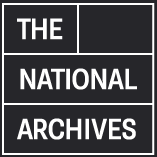
Suffrage Tales
Suitable for: Key stage 3, Key stage 4, Key stage 5
Time period: Early 20th Century 1901-1918, Interwar 1918-1939
Curriculum topics: Suffrage
Potential activities: Worksheet for use with individual video clips, independent research practice, debates and discussions.
Download: Lesson pack
To mark the 100-year commemorations of the Representation of the People Act, the Education Service worked with professional film-maker, Nigel Kellaway, to engage young people (aged 16-19) with suffrage records held at The National Archives.
‘Suffrage Tales’ is the outcome of this project; a short stop-motion animation film, researched, created and filmed during Sunday 30 July – Friday 4 August 2017. As the power of the vote comes under scrutiny and provokes highly contentious debate, this film throws light upon the historical context of the franchise in a uniquely refreshing way. The young people involved drew upon a wide range of documents from our collection, to produce a film about their interpretations of the fight for women’s suffrage.

Many thanks to the Friends of The National Archives for their support on this project.
You can now view the video in full here, or download our lesson pack complete with questions and clips using the button above.
Tasks
Polling stations
- What is the purpose of a polling station?
- What does the right to vote mean?
Rights and Revolutions
- When did the French Revolution begin? (a) 1719 (b) 1749 (c) 1789
- Where and when did people in Britain demonstrate for their rights?
- Explain the meaning of the term ‘suffrage’.
- What conditions in the 19th century encouraged people to demand the right to vote?
- How many people died at ‘Peterloo’? (a) 13 (b) 18 (c) 23
- Why do you think this event was called ‘Peterloo’?
The Reform Acts
- What did the two reform Acts achieve?
- Did women get the vote as result of them?
Victorian expectations
- What did Prime Minister Herbert Asquith think of women being allowed to vote?
- What was the ideal woman supposed to be like at that time?
The Women’s Suffrage Society
- When did the women’s suffrage society start? (a) 1866 (b) 1856 (c) 1876
- How did the society grow?
- What methods did this society use to fight for the vote?
- Who was Millicent Fawcett?
- What the full name of the society founded by Emeline Pankhurst?
- How did the approach of the WSPU differ from earlier groups that supported votes for women?
- What was their slogan?
Suffrage and the working class
- What action did working class women take in the struggle for the vote?
- Who was Annie Kenney?
Police tactics
- What methods did the police use to observe and record suffragette activities?
- How did suffragettes try to avoid detection of their particular activities?
Marching for women’s Suffrage
- When was the first public march by the National Society for Women’s Suffrage? (a) Feb 1930 (b) Feb 1912 (c) Feb 1907
- How many women attended?
- What was the march sometimes called?
Gaining attention
- What other activities did women carry out to draw attention to their cause?
- What happened on Black Friday, 18th November 1910?
Women in prison
- How many women were imprisoned for their protests?
- How were they treated in prison?
- What further protest for the vote did some women make whilst in prison?
- What types of documents can we use to find out about their treatment in prison?
A daylight game
- Name the bill passed by Government aimed to reduce bad publicity linked to force feeding suffragettes on hunger strike in prison.
- What were the terms of this law?
- How could it have affected the suffragette movement?
Women in wartime
- What impact did the First World War have on the campaign for the vote?
- What did the Representation of the People Act 1918 achieve for women?
- When did women get the vote on equal terms as men?
Further questions
- Why is the right to vote a basic right?
- What different types of primary sources can be used to find out about the suffragette movement?
- How many have you spotted in this film?
- Can you explain the difference between ‘suffragette’ and ‘suffragist?’
Extension task
Research any of the following women who campaigned for the vote:
- Elizabeth Fawcett
- Christabel Pankhurst
- Emmeline Pankhurst
- Sylvia Pankhurst
- Annie Kenney
- Emmeline Pethick-Lawrence
- Emily Davison
- Mary Richardson
- Elizabeth Garret Anderson
- Sophie Duleep Singh
- Lillian Lenton
- Evelyn Manesta
- Lillian Ball
Back to top
Suitable for: Key stage 3, Key stage 4, Key stage 5
Time period: Early 20th Century 1901-1918, Interwar 1918-1939
Curriculum topics: Suffrage
Potential activities: Worksheet for use with individual video clips, independent research practice, debates and discussions.
Download: Lesson pack
 The National Archives
The National Archives






